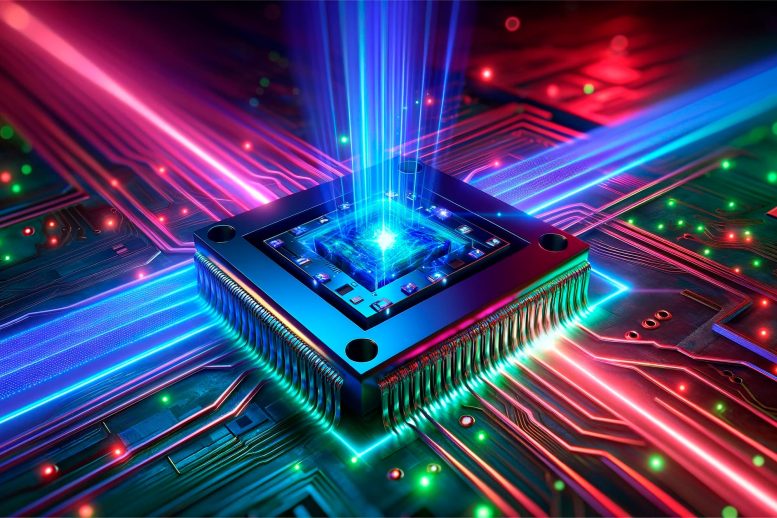
Researchers have successfully demonstrated superconductivity on a chip, revealing non-linear electrical responses in K3C60 thin films and observing critical current behavior. This groundbreaking research, which uses on-chip non-linear THz spectroscopy, opens up new avenues in optoelectronic applications and advances our understanding of superconductivity in quantum materials.
Researchers have integrated laser-induced superconductivity on a chip, marking a breakthrough in optoelectronics.
Scientists at the Max Planck Institute for the Structure and Dynamics of Matter (MPSD) in Hamburg, Germany, have shown that a previously demonstrated ability to turn on superconductivity with a laser beam can be integrated on a chip, opening up a route toward optoelectronic applications.
Superconductivity in K3C60 Thin Films
Their work, published on November 9 in the scientific journal Nature Communications, also shows that the electrical response of photo-excited K3C60 is not linear, that is, the resistance of the sample depends on the applied current. This is a key feature of superconductivity, validates some of the previous observations, and provides new information and perspectives on the physics of K3C60 thin films.
Advancements in Optical Manipulation of Materials
The optical manipulation of materials to produce superconductivity at high temperatures is a key research focus of the MPSD. So far, this strategy has proven successful in several quantum materials, including cuprates, k-(ET)2-X, and K3C60. Enhanced electrical coherence and vanishing resistance have been observed in previous studies on the optically driven states in these materials.
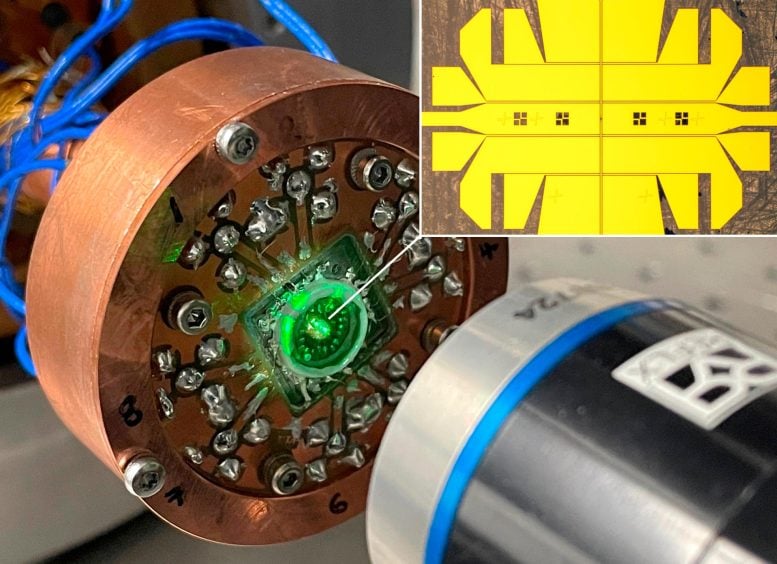
Measurement setup, in which mid-infrared and visible beams are focused onto the optoelectronic device. Insert: Image of the device on which picosecond current pulses are launched, transported and detected. Credit: Eryin Wang, MPSD
On-Chip Non-Linear THz Spectroscopy
In this study, researchers from the Cavalleri group deployed on-chip non-linear THz spectroscopy to open up the realm of picosecond transport measurements (a picosecond is a trillionth of a second). They connected thin films of K3C60 to photo-conductive switches with co-planar waveguides. Using a visible laser pulse to trigger the switch, they sent a strong electrical current pulse lasting just one picosecond through the material. After traveling through the solid at around half the speed of light, the current pulse reached another switch which served as a detector to reveal important information, such as the characteristic electrical signatures of superconductivity.
Observing Critical Current Behavior
By simultaneously exposing the K3C60 films to mid-infrared light, the researchers were able to observe non-linear current changes in the optically excited material. This so-called critical current behavior and the Meissner effect are the two key features of superconductors. However, neither has been measured so far – making this demonstration of critical current behavior in the excited solid particularly significant. Moreover, the team discovered that the optically driven state of K3C60 resembled that of a so-called granular superconductor, consisting of weakly connected superconducting islands.
Unique Capabilities and Future Prospects
The MPSD is uniquely placed to carry out such measurements on the picosecond scale, with the on-chip set-up having been designed and built in-house. “We developed a technique platform which is perfect for probing non-linear transport phenomena away from equilibrium, like the non-linear and anomalous Hall effects, the Andreev reflection, and others,” says lead author Eryin Wang, a staff scientist in the Cavalleri group. In addition, the integration of non-equilibrium superconductivity into opto-electronic platforms may lead to new devices based on this effect.
Contributions to Science and Technology
Andrea Cavalleri, who has founded and is currently leading the research group, adds: “This work underscores the scientific and technological developments within the MPSD in Hamburg, where new experimental methods are constantly being developed to achieve new scientific understanding. We have been working on ultrafast electrical transport methods for nearly a decade and are now in a position to study so many new phenomena in non-equilibrium materials, and potentially to introduce lasting changes in technology.”
Reference: “Superconducting nonlinear transport in optically driven high-temperature K3C60” by E. Wang, J. D. Adelinia, M. Chavez-Cervantes, T. Matsuyama, M. Fechner, M. Buzzi, G. Meier and A. Cavalleri, 9 November 2023, Nature Communications.
DOI: 10.1038/s41467-023-42989-7
The research underpinning these results was carried out in the laboratories of the MPSD at the Center for Free-Electron Laser Science (CFEL) in Hamburg, Germany.






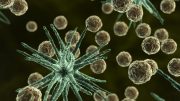
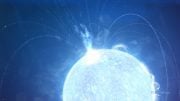
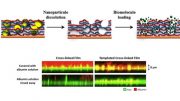
Sucks
INTERESTING THE WORK DONE, I WILL LIKE TO WORK WITH THE TEAM, I’AM A SCIENTIST WORKING IN THE DOMAIN OF OPTOELECTRONIC OSCILLATOR.